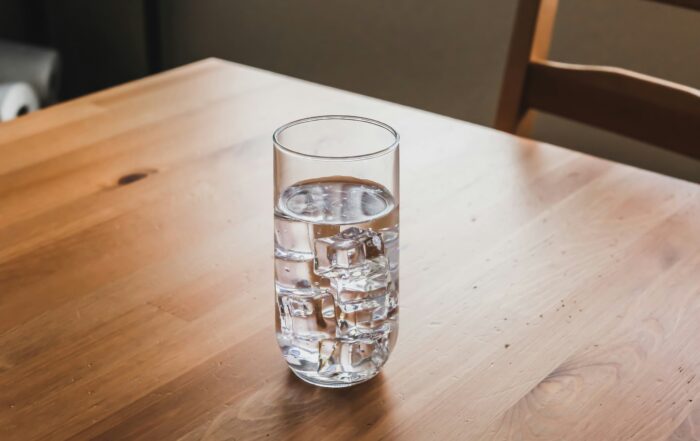The Trebek Initiative funds photographers, documentarians, educators, conservationists, innovators and researchers whose projects aim to preserve Canadian and Indigenous land, wildlife, water, culture and history. The types of projects they champion are: exploration of unique ecozones in Canada, scientific research on Canadian wildlife, wilderness or water, a photography exposition on unique Canadian geographies and communities, or new tools to create a better understanding of our environment.
This year, the Trebek Initiative is privileged to support 9 extraordinary individuals with grants totalling $710,000. They are the storytellers, the researchers, the guardians of our environment, the educators, and the innovators, all dedicated to painting a portrait of Canada’s rich tapestry—its lands, its wildlife, its waters, its cultures, and its history, with the goal of “igniting a passion to preserve” across Canada. Let’s applaud their dedication and follow their inspiring journey to deepen our connection with and appreciation of Canada’s natural and cultural Heritage. Here are some of the projects focused on the Great Lakes.
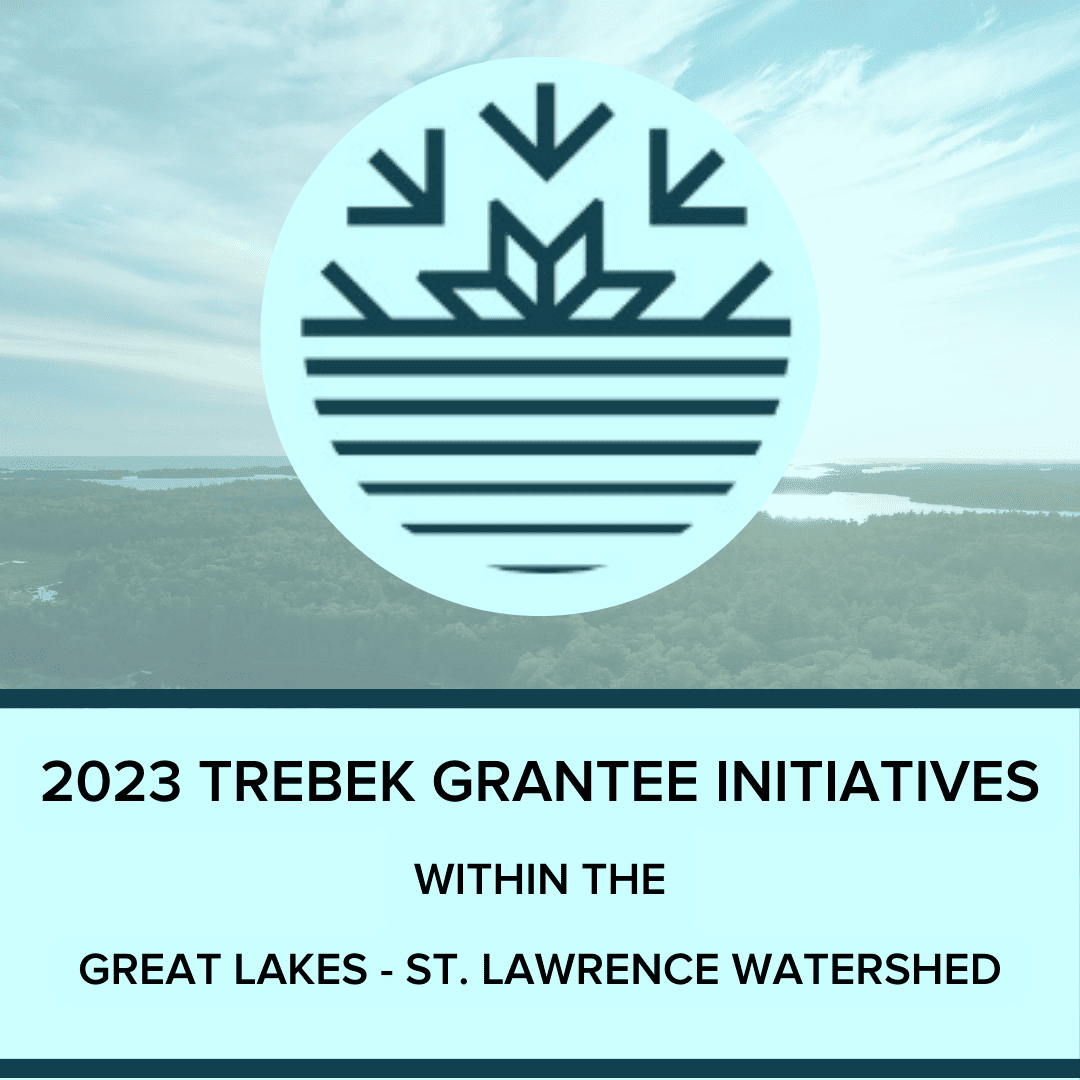
Yvonne Drebert
Beneath The Surface: Using ROVs To Reveal The Impacts Of Quagga Mussels On The Great Lakes
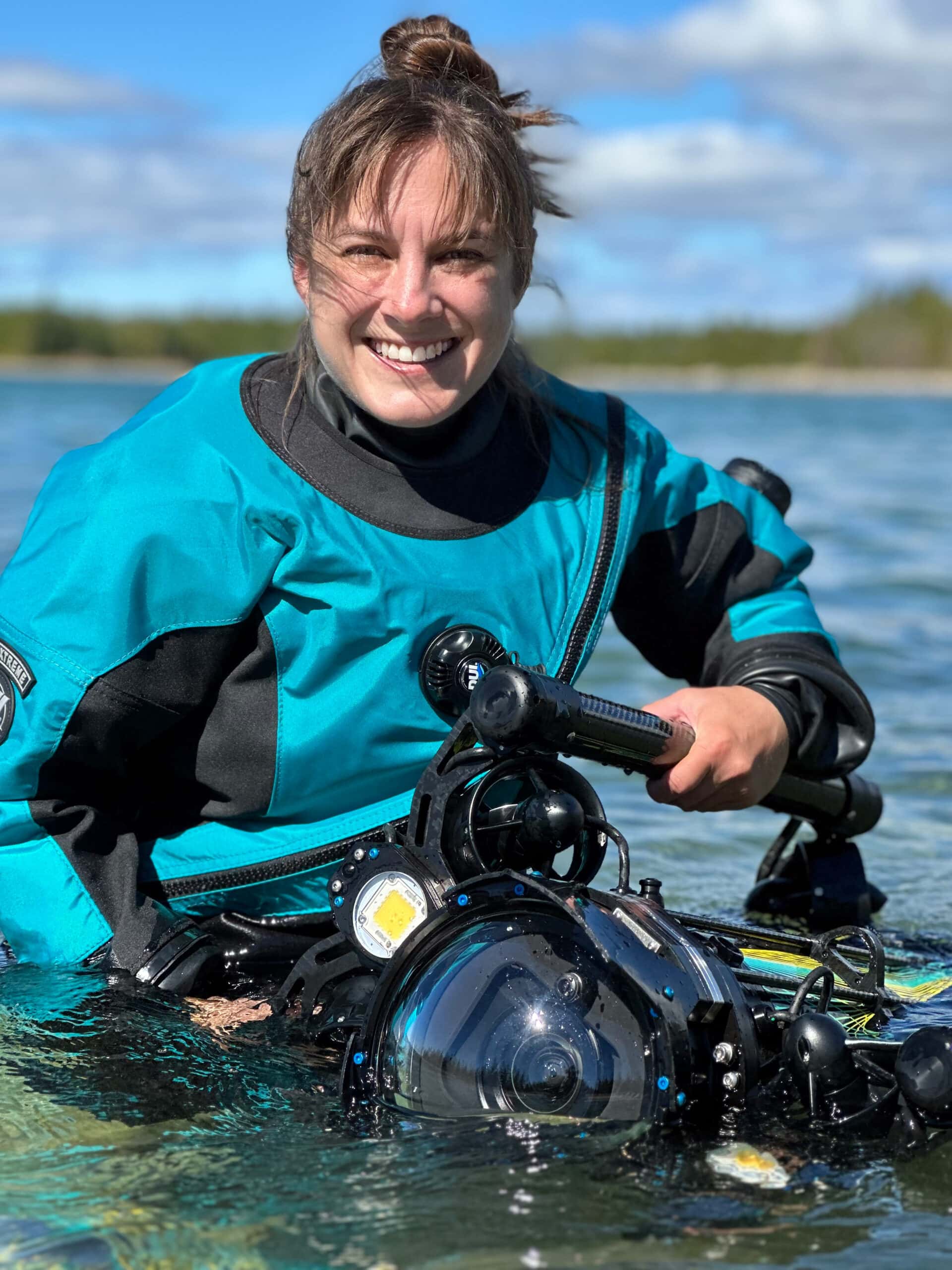
It’s gone largely unnoticed, but over the past 20 years, some 950 trillion invasive quagga mussels have literally sucked the life out of North America’s Great Lakes. They’re trapping the basic building blocks of life, nutrients, on the lake bottom. Without nutrients, organisms of all kinds—from the tiniest plankton to the largest fish—have vanished. In Lakes Huron, Michigan, and Ontario, vast offshore areas have become “biological deserts,” heralding one of the biggest changes to the Earth’s freshwaters in 10,000 years. While the consequences for nature and people are severe, the loss of life has had an extraordinary side effect. It’s made the lakes far clearer than they’ve ever been before, giving us an incredible window into the depths. With support from the Trebek Initiative, Yvonne will use underwater drones and ultra-low light camera technologies to explore the effects of quagga mussels on the world’s largest freshwater lake system. Not only will this project help the scientific community expand their understanding of species that need our help now more than ever, but it will also capture the imagination of a public that’s never seen what’s beneath the surface.
Ryan Eagleson
The Exploration Of Understudied Invertebrate Communities In The Globally Unique And At-Risk Saguenay Fjord Ecosystem
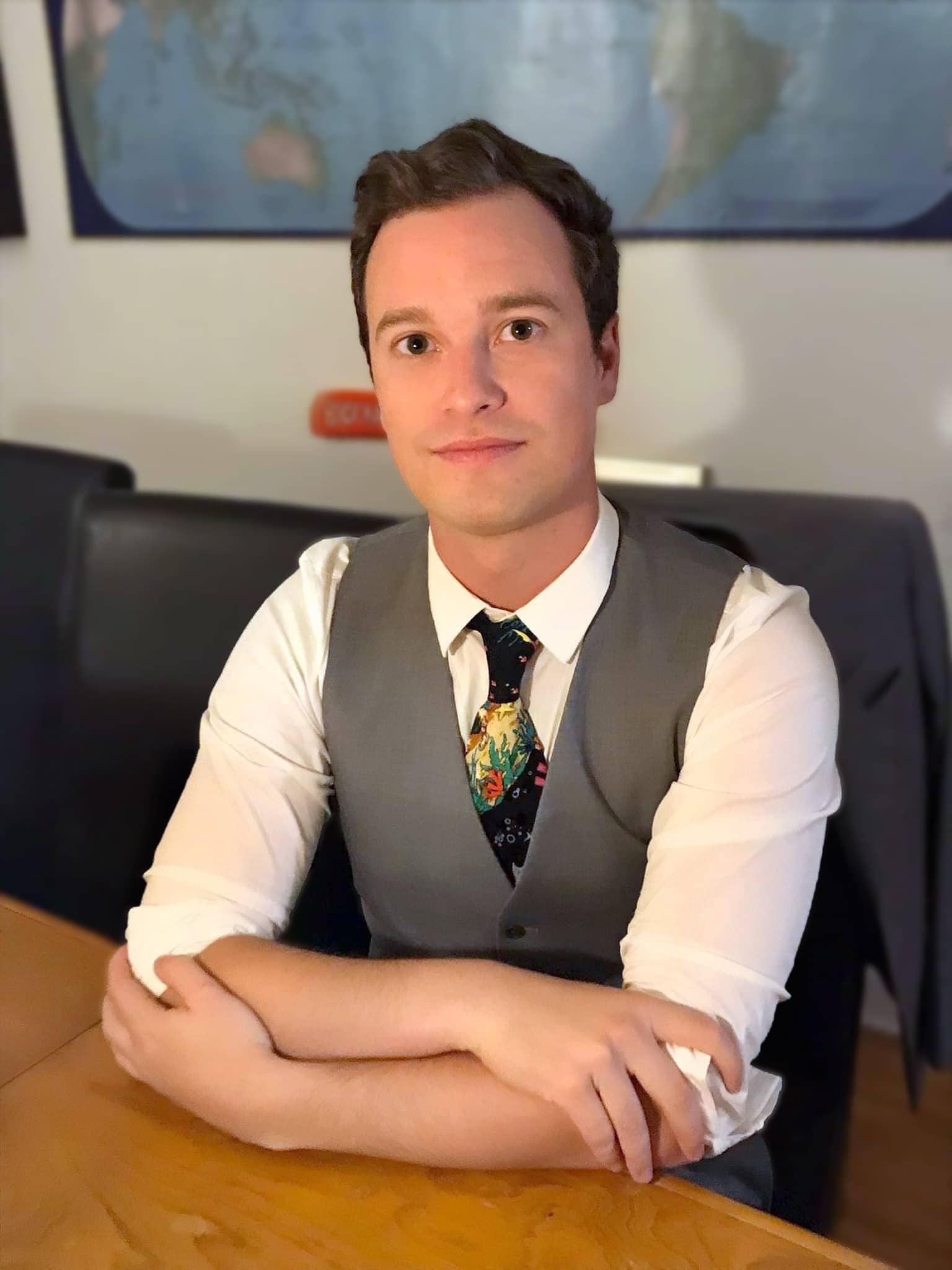
The Saguenay Fjord in Québec is globally unique, being one of the only to flow into a river rather than the open ocean. Expeditions in this area routinely discover species unknown to science. Its underwater cliffs exceed 900 ft in depth and hold productive waters brimming with invertebrates such as corals, anemones, and starfish, as well an array of fishes, sharks, and marine mammals—all protected by the Saguenay St. Lawrence Marine Park. As a result of climate change, local marine conditions have been rapidly changing with an unknown impact on the equally unknown communities of invertebrates inhabiting the area. The successful management of any protected area involves understanding the local ecosystem, its health, and areas important for the continued success of its species. With support from the Trebek Initiative, Ryan will peel back the dark cloak of this deep sea fjord system by conducting an unparalleled continuous video survey of the entire fjord floor, more than 80 km in length, as well as a number of drop camera surveys along the sea floor and fjord walls. The project will deliver critical data to inform marine park management, produce new imagery of this relatively unknown area, and as an added bonus, it will provide STEM mentorship opportunities for local youth.
Sara Hylton
Water As A Sacred And Scarce Resource Among First Nations Reserves In Canada
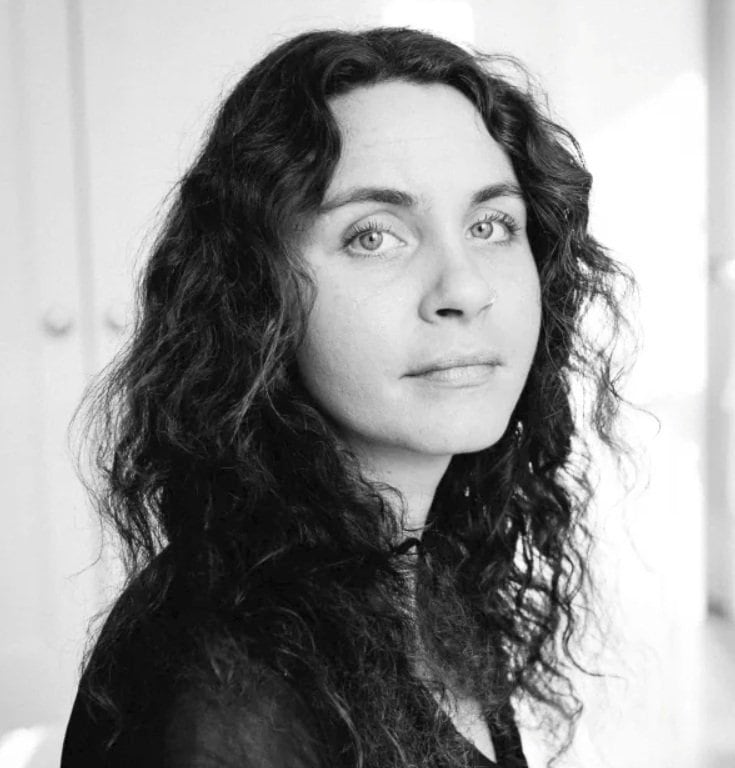
Water has significant cultural importance to Indigenous communities. Indigenous women in particular share a sacred connection to the spirit of water through their role as child bearers and have particular responsibilities to protect and nurture water. Through photos and videos, Sara will document water as a theme across four Indigenous communities in three provinces, recognizing the importance of — and reliance on — water, as well as the ongoing scarcity and contamination of water in these regions. Using medium format portraits, her work will explore how Indigenous communities rely on and interact with water, while juxtaposing this with the reality of contaminated water sources, as well as examining the impacts of industrial activity and longstanding colonial laws and policies.
Kirsten Kennedy
‘Two-Eyed Seeing’; Using Lidar To Document And Illustrate 11,000 Years Of Environmental And Cultural History In The Georgian Bay

Georgian Bay, Ontario is a unique North American ecosystem now recognized as an Aspiring UNESCO Global Geopark in acknowledgement of its diverse geology and landscapes. By virtue of its position along the edge of the Canadian Shield, it has been at a crossroad of cultures since people first inhabited the shores of the Glacial Lake Algonquin, 11,500 years ago. Thus began a long-lived interconnection between an evolving landscape and its occupants that has persisted in the histories and traditions of the many Indigenous cultures that call Georgian Bay home, like the Huron-Wendat, Anishinaabe and Metis. Embracing the principle of ‘two-eyed seeing’ to reconcile the Indigenous perspective and history with state-of-the art mapping technologies, Kirsten will map geo-cultural sites identified by local Indigenous and archeological partners with Light Detection and Ranging (LiDAR) technology. Work completed to date shows that LiDAR imagery reveals hitherto unseen details of a site’s physical setting in a highly visual and accessible format. The results will inform the planning of the UNESCO Geopark and associated educational and conservation activities. As a final educational product, LiDAR images and maps will be curated into a large format physical and digital atlas of “geo-cultural” sites around Georgian Bay.
Andrew Budziak
Under the Ice
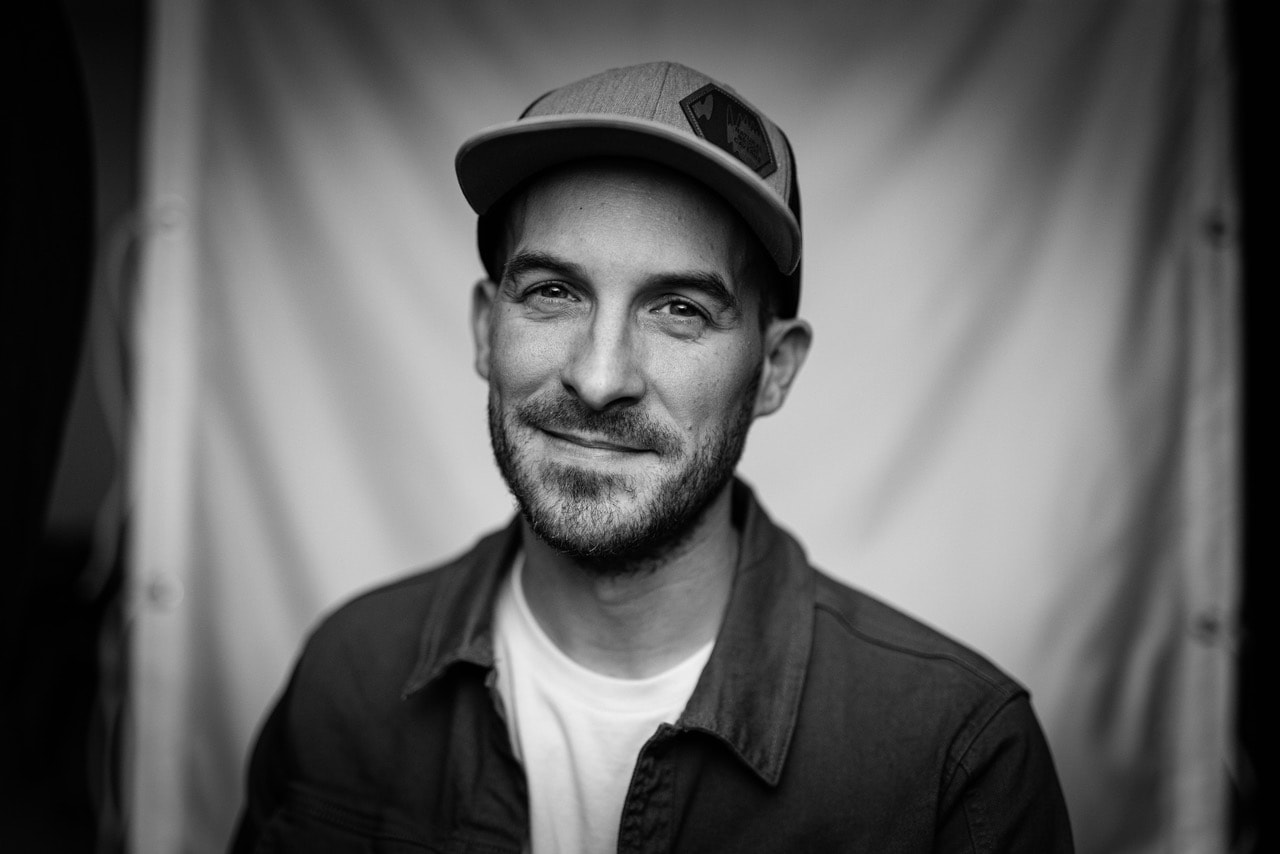
Algae communities that are key to understanding the health of our lakes were recently discovered living on ice ceilings in the winter months. Very few samples have been collected due to the challenging nature of accessing the ice ceilings. Scientists are hungry for these samples because the window to understand what’s going on down there is closing: each winter there is less and less ice coverage on freshwater lakes and we are losing the opportunity to understand how important ice coverage is for the health of freshwater lakes before that ice disappears forever as a result of a warming planet. With support from the Trebek Initiative, Andrew Budziak is creating a documentary that follows an elite team of ice divers in the Kenora region as they enter some of the most hostile environments on the planet to collect winter algae samples which will provide crucial information about the future of our planet’s freshwater. Through breathtaking underwater cinematography, fascinating characters and easily digestible science, Andrew’s documentary will tell the story of citizen science at its most extreme and perhaps most important.
Camille Martel
Beneath The Ice: A First Look At The Endangered St. Lawrence Beluga Whales In Their Winter Habitat
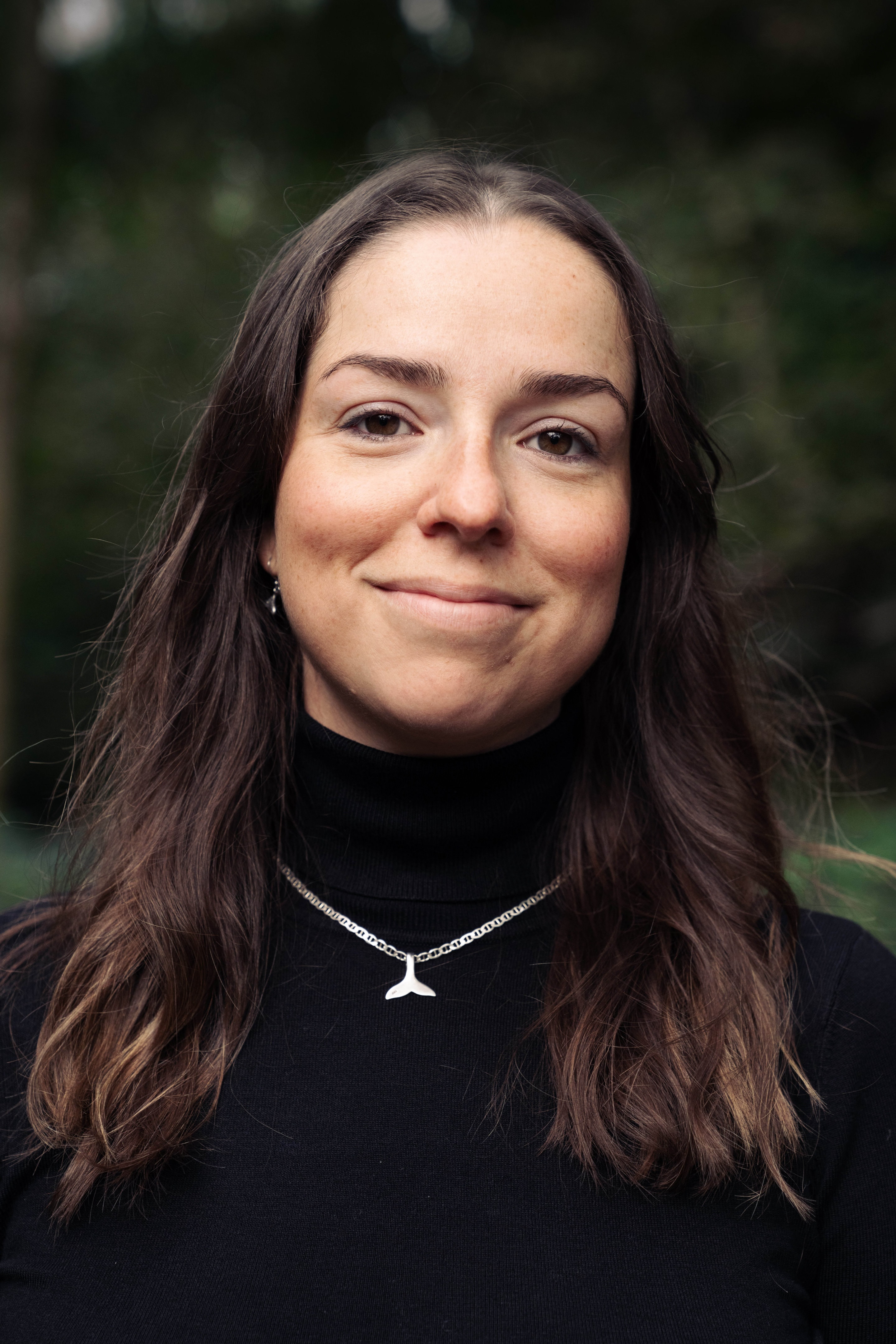
When ice retreated in North America after the last ice age, a small portion of the beluga whale population found themselves trapped in the St. Lawrence River. The population (especially mothers and their calves) have been declining for several decades due to habitat degradation, pollution, human disturbance and climate change. While whales have been heavily studied for the past 35 years, what they do in the winter has largely remained a mystery. As the provincial government in Quebec and the federal government prepare to expand whale protection areas in the coming years it’s critical that we better understand their behaviours and winter migration patterns. After six years of aerial surveys in Quebec, Canada, a team of experts have finally pinpointed the location where beluga whales spend their winters, a long missing component. With support from the Trebek Initiative, Camille Martel will attempt to document these elusive creatures in their winter retreats via short film. The goal of Camille’s work is both to inspire audiences by illuminating the wonders of our natural world, while also supporting appeals to policymakers to extend the boundaries of marine conservation areas to cover beluga whales’ newly identified winter habitats.
Alexander Dungate
Sustainable Fisheries Monitoring With Artificial Intelligence

As global fish stocks decline more rapidly every year, governments around the world are rushing to massively scale up their ability to monitor fishing activity. Current monitoring strategies rely on someone manually watching video footage of fishing activity – this is slow, expensive, and impossible to scale up to meet the global need. Today more than one third of all catch at sea goes unreported, threatening food security and livelihoods for over 800 million people. The world desperately needs better fisheries monitoring solutions. Alexander Dungate is at the helm of a youth-led team, OnDeck, creating artificial intelligence software that automatically detects catch and bycatch in video footage from fishing vessels, drastically reducing the time and costs needed to review fishing trips. In doing so, OnDeck makes fisheries monitoring accessible and scalable across the globe. With support from the Trebek Initiative, Alexander and the team at OnDeck will fine-tune machine learning models for key species of importance to local stakeholders, including West Coast groundfish fisheries and the Indigenous fisheries of Ha’oom. The Canadian pilot will take place in 2024 and the team will publish quantitative results of using AI for fisheries to better understand the performance of automated video review to human review and calculate the resulting benefits.

Dalal Emily Lucia Hanna
The Legacy of Forestry on Freshwaters: Enhanced Scientific Rigor, Deeper Public Engagement, More Timely & Varied Media
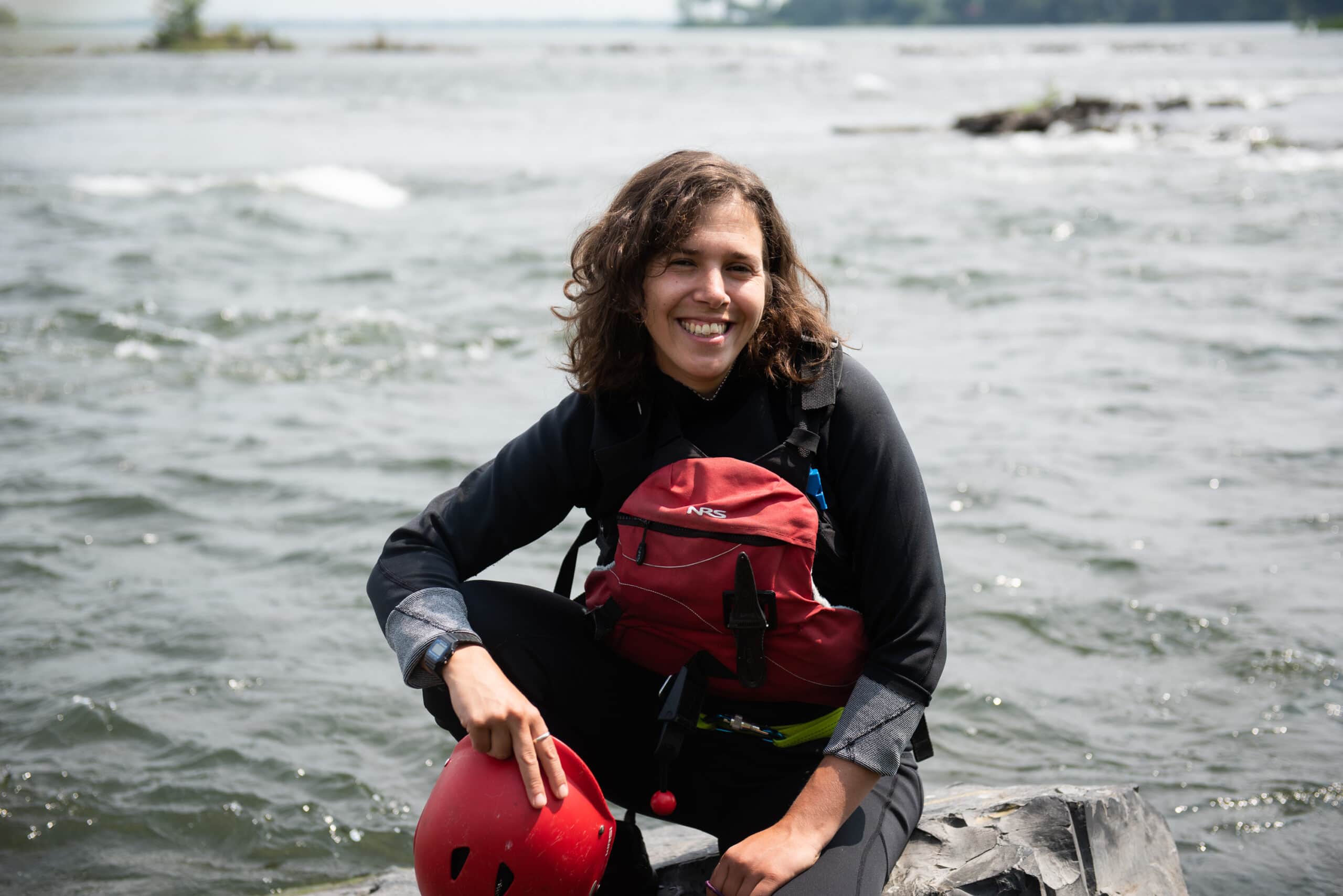
Forestry is one of Canada’s most important and longest-standing industries and research shows that it can have negative effects on water quality and freshwater biodiversity, but we know very little about how changes recover—or don’t—over time. With support from the Trebek Initiative, and additional funding from the National Geographic Society, Dalal and her team are leading a cross-Canada StreamBlitz. They will collect environmental DNA and water quality information from 100 streams with varying histories of timber harvesting in their watersheds. This will allow them to document if and how stream biodiversity and water quality recover in the 50 years following harvesting. The findings will be used to make recommendations for harvesting practices that minimize long-term cumulative effects on freshwaters. To help bring this project to Canadians, members of the public will be invited to participate in the StreamBlitz by visiting their local streams to collect water quality data. The team will also partner with high school classrooms across the country over the course of a year to share information about forestry and freshwaters, with several classrooms receiving free water quality sampling kits to get youth out onto the water. The project findings will be shared with policymakers, conservation practitioners and foresters through targeted online events – and a website will be created to engage Canadians with interactive story maps, photos, video, writing, and data visualizations designed to improve their understanding of the relationships between forestry and freshwaters.
Nick Hawkins
Atlantic Salmon: The Fight to Survive
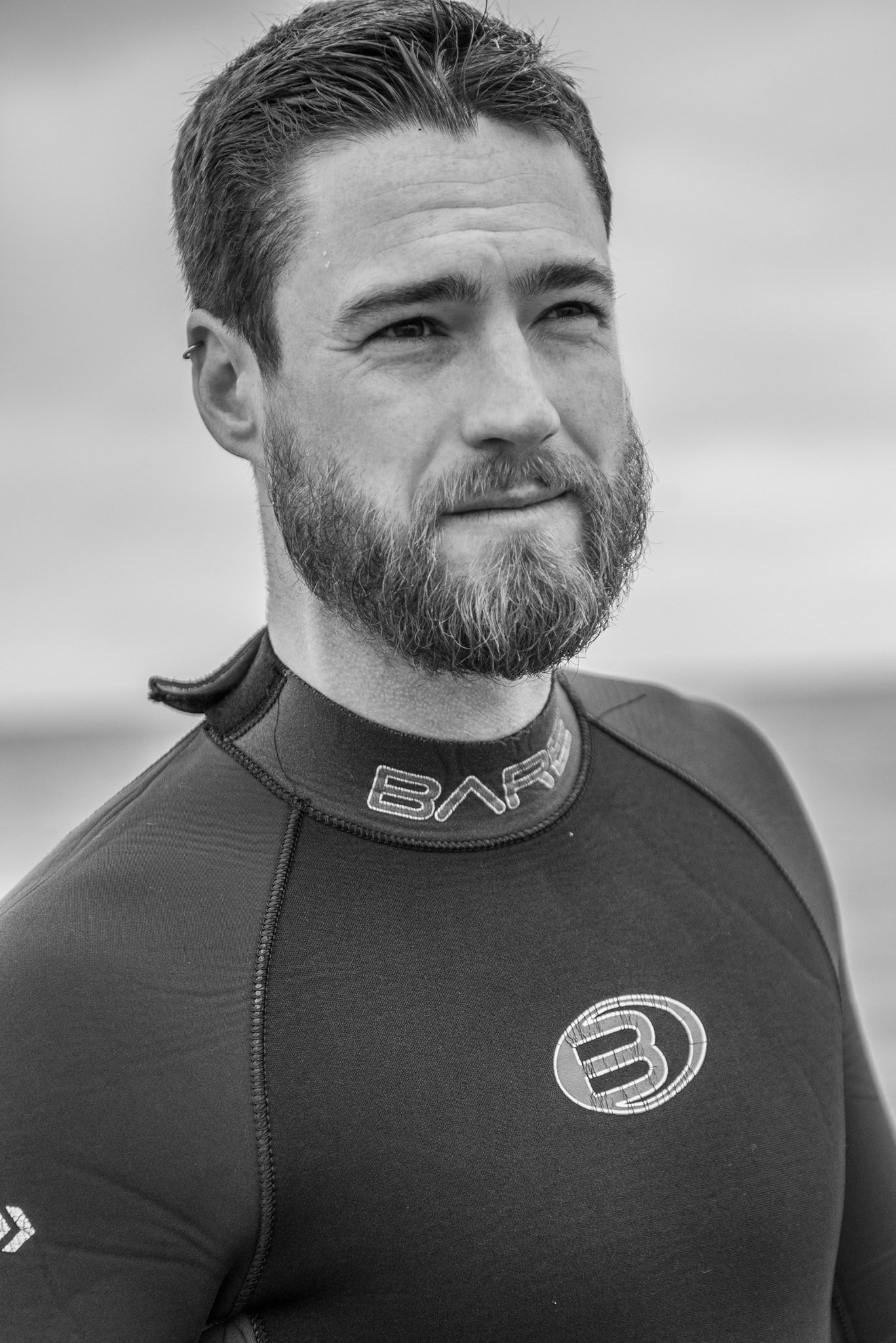
Atlantic salmon are a keystone species and an important icon for the people of Atlantic Canada and Quebec, where it has been central to the social, cultural and economic life of many First Nations since time immemorial. Atlantic salmon also supports vibrant recreational fisheries throughout the region. Since 1995, wild Atlantic salmon populations in Canada have declined by 50%. Overfishing, habitat degradation, open net pen aquaculture, and climate change are major drivers of this trend. Despite their iconic and prestigious status as “The King of Fish,” the plight of wild Atlantic salmon receives limited media coverage and often focuses on their extirpation from entire watersheds – leading many to think that the species is largely extinct or too far gone to be saved. Even worse, the expansion of open-net pen aquaculture has given the species a reputation as a harbinger of disease and parasites to native fish and ecosystems. With support from the Trebek Initiative, Nick and his team will use dramatic and innovative cinematography, to reveal the epic migration of Atlantic salmon from their home rivers in Canada to their feeding grounds in the icy fjords of Greenland. They will document the journey of this incredible fish, along with the passionate efforts of those trying to reverse the species’ precipitous decline. By arming conservation efforts behind Atlantic salmon with the strongest, most impactful visuals possible, this project will help transform new audiences into advocates.
Victoria Lean
Seaways of Sound: The Ripple Effect of Underwater Noise on Whales
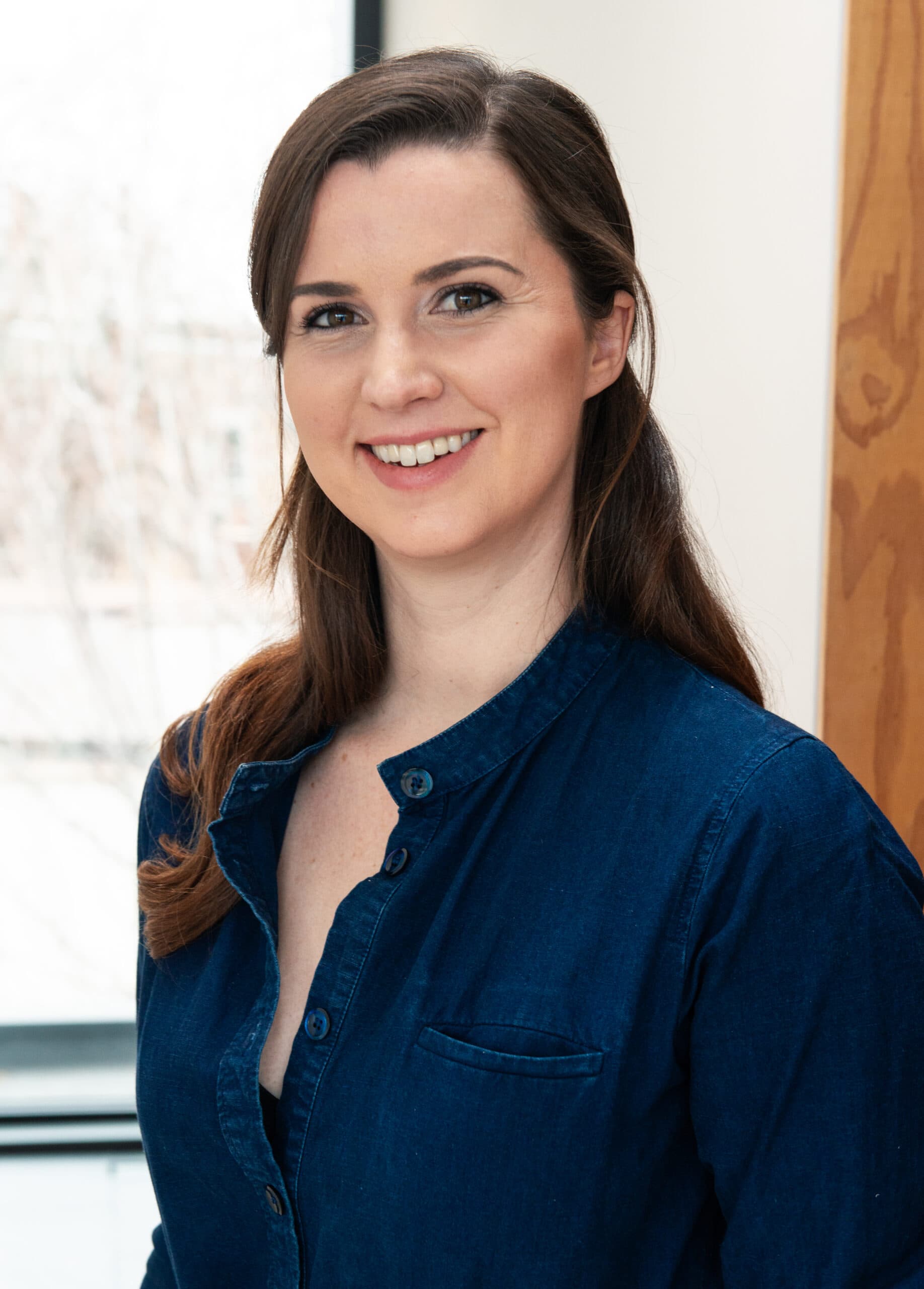
The St. Lawrence River has always been filled by the hums, clicks and whistles of the belugas, humpbacks and other marine life that use their songs to echolocate and communicate. Mothers and calves murmur special “contact calls,” pods use unique sounds to keep in touch over long distances and ultrasonic pings to echolocate food. Yet today, over ten thousand cargo ships, pleasure crafts, cruises and ferries buzz over them every year, creating a cacophonous rumble. Ship and boat sound compound an already stressful existence. Underwater, sound travels 4.5x faster than it does in air, making it not only vitally important for underwater creatures, but also making noise pollution that much more catastrophic. With support from the Trebek Initiative, Victoria will leverage the latest technology to produce a short documentary, with supporting photos and essays, that depict the impact of humans’ underwater noise pollution on whales like never before. The documentary takes place in the St. Lawrence River, an important shipping route that cuts right through the home of thirteen whale species, including a unique and endangered population of just 900 beluga whales. Weaving cutting-edge research with stunning images and visceral cinematography, this project will raise awareness of the consequences of boat shipping noise on marine mammals and could be used to help influence Federal and Provincial conservation policy.
Scott Parent
Oiseaux – How Anthropogenic debris is be-fowling the Great Lakes and infiltrating the food web
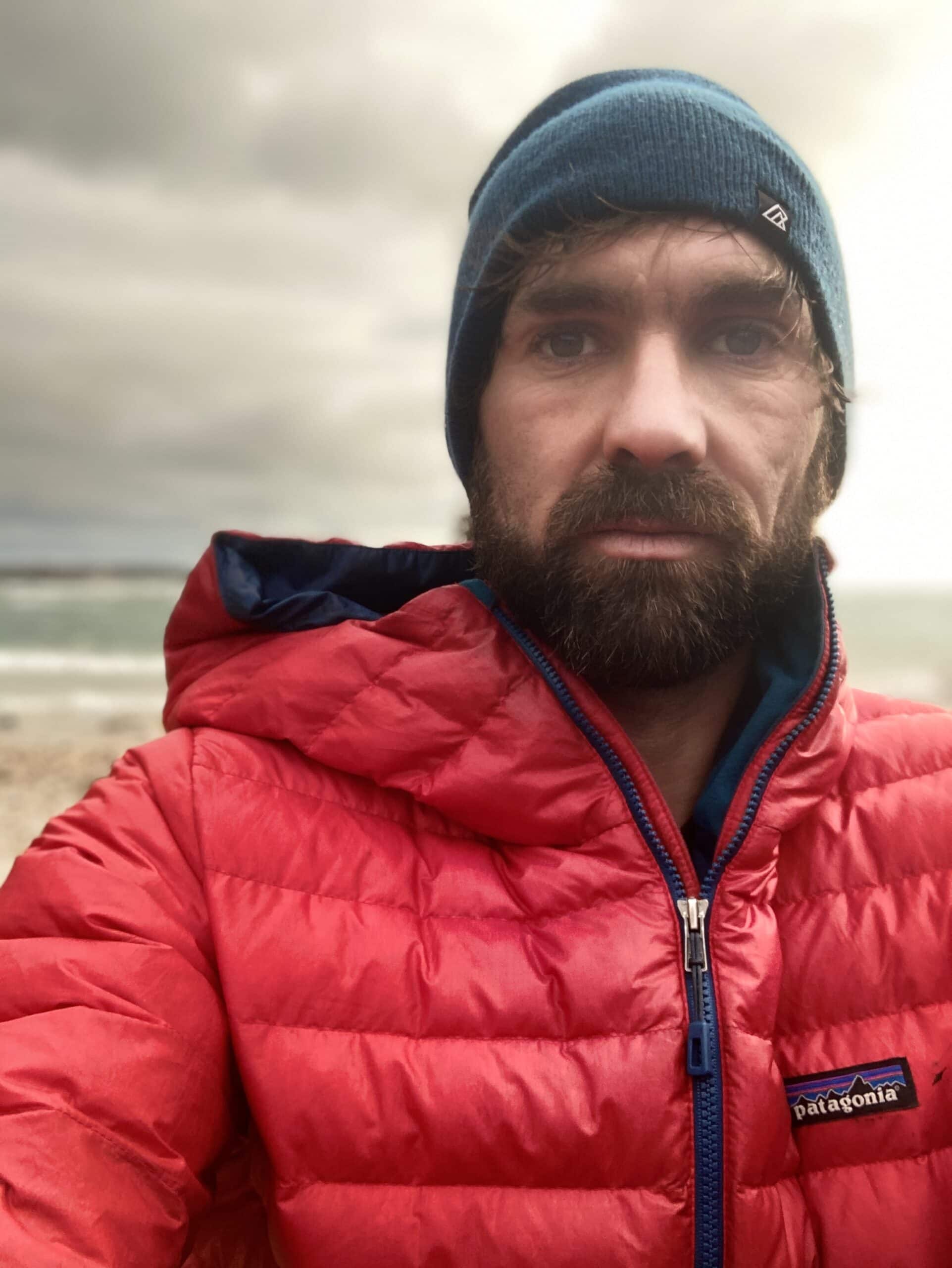
Anthropogenic debris is plaguing aquatic ecosystems around the globe. Research on its effects on freshwater systems hasn’t been as well supported as marine systems globally. Double-crested cormorants of the Great Lakes, along with other waterbirds and raptors, suffered die-offs in the early 1970’s, as a result of contaminated waters. Now they are faced with a new hindrance – with plastic trash in their nests, and microplastics in their stomach. The birds are a barometer of sorts on the health of the water; they harken changes occurring beneath the surface. As piscivores, microplastics found in the bellies of fledgling cormorants are considered a likely indicator of trophic transfer. Meaning, plastic has seemingly found its way into the food web beneath the surface. With support from the Trebek Initiative, Scott will produce a short film, shot in his respective backyard of Lake Huron, that captures these communes of waterbirds. The film will invite viewers to develop a bond with the waterbirds and their freshwater island environment. Using high-quality prime lenses to gain the best possible footage for research partners and an immersive experience for all. Scott and his team will examine other colonies of waterbirds across the Great Lakes, especially in heavily contaminated nesting areas. This short film will be shared by the Three Waters Foundation, a non-profit charity organization dedicated to cleaner waters and shorelines for Lake Huron with a focus on the remote islands.


